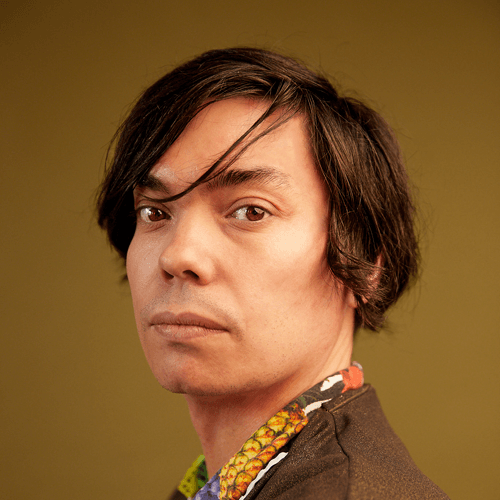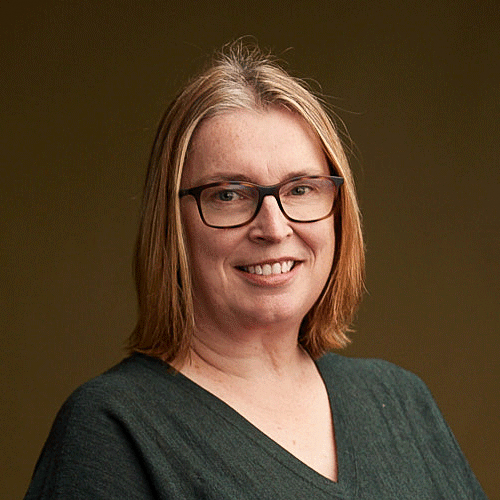After shaking up stages in England, The Writer makes it way to New Zealand. Sam Brooks talks to its director and lead about why they’re excited for audiences to experience this remarkable work.
The Writer is an unassuming title for a show that attempts to do so much. The latest Silo Theatre production is many things all at once: it’s a searing attack on the forces that hold back theatre, along with its most vulnerable and vital artists. It’s a provocation, asking the audience to question what makes a “good story”. And it’s a raw and unflinching examination of what it takes to be a woman making art.
Director Sophie Roberts, also artistic director of Silo Theatre, says she’s drawn to work that attempts something adventurous with the form. “The ‘well-made play’ is not really what excites me as an artist,” she says. “Even though I do appreciate and love those great classics.”
The Writer, by British playwright Ella Hickson, is certainly fearless in its approach, and its message. “The central idea of the play is female expression and what it costs to make good art as a woman,” Roberts says. “Hickson is challenging storytelling, what theatre is, what art is, and the restrictions on all these things by the patriarchy.”
The Writer is aggressively not a “well-made play” – the sort of play with the fourth wall firmly up, scene transitions smoothly carried out, and in which characters talk more or less like people in real life. In The Writer, bounds of reality are redefined in every scene, and the audience is never allowed a comfortable paradigm, either stylistic or ideological, from which to view the work. For Roberts, the script ticked more than a few boxes, most pertinently that she hadn’t seen a play like this before.
When the script came across her desk, it was the most exciting thing she’d read in years. “It just felt so unique in terms of what it was and what it was trying to do,” she says. “It felt like such an awesome challenge for a group of artists to realise it.”
Roberts believes that Silo Theatre, which turns 25 this year, is uniquely placed to stage this show. While the company has adapted its approach to different eras of its existence, there are elements that have always remained fundamental to Silo’s DNA, she says.
“One of those things, I think, is that the company has always presented challenging, fearless new writing from New Zealand and from around the world that is going to give audiences something to think about, talk about, and be a transformative experience.”
When Roberts asked the actor and writer Sophie Henderson to take the leading role in The Writer, Henderson immediately said yes – after all, she says, she would work with Roberts on anything (as would many actors). However, Roberts cautioned her to read the play before jumping in feet first.
Having done so, the actor in Henderson was still keen. The writer in her, however, had a more complicated response. “Part of me hated it,” she says. “I was repulsed by it because of the form, because of the breaking of structure. It’s so confronting as a writer.”
Still, having decided to do it, the play “got under my skin”, says Henderson, who plays an unnamed, thinly veiled version of Hickson. “It’s this trapped rage, repressed rage that I’ve not let out,” she says of the role. The Writer will allow audiences to see Henderson as they’ve never seen her before, in a role that lets her do what women are so rarely allowed to do on stage.
Prior to signing onto the production, Henderson hadn’t acted in five years. Her last performance was in Silo Theatre’s Revolt. She Said. Revolt Again by Alice Birch, another play that explores what it takes to dismantle patriarchal norms. She says her years away from acting taught her some hard truths about being a writer. “You’re the boss of the world. To a point. Until someone else takes it from you.”
Henderson has written multiple films, and is currently working on a film about soldier Charles Upham and her own autobiographical TV series. “I feel so powerless as a writer most of the time. You’re so small, and you’re made to feel invisible. People want you invisible,” she says. “In the film world, you are the bottom. People say a script is ‘a blueprint’ for a film! You don’t think I made 10,000 decisions about every single sentence? It’s not a blueprint, there is no film without me.”
While Roberts says that the play is, at its heart, about being a female artist, she also believes it’s about the intersection of art and commerce. “Ella Hickson is doing something very pointed around challenging this idea of who the fuck gets to decide what good art and what good theatre is. We’ve all just come to accept this male defined idea of commercially viable naturalism as good. And why?”
A text like The Writer, which shifts realities almost scene-by-scene, was a real challenge for Roberts. In this play, the director doesn’t just have to define a single world, they have to do it multiple times, and carry the audience through an experience that comes close to being an entirely new form of theatre.
The most assertive way that The Writer breaks form comes near the middle of the show. It’s a scene where Hickson uses the stage directions to provoke the company wrangling with her text: “What follows should be an attempt at staging female experience, the director should be aware of avoiding the inherently patriarchal nature of theatre.”
The temptation with a provocation like that is to apply a whole lot of ideas or images to it, but Roberts quickly realised that she had to let go of her usual approach. For that section of the play, she decided to “work off Sophie [Henderson] and to be led by her as an artist, by the way that text sits in her body. Approaching it from a place of feeling rather than a place of image of looking or being very aware of the gaze on it.”
She says getting an author’s provocation like Hickson’s is “so fucking great, because it really challenges you as a director and as actors. It makes you realise that is the male way of looking at women on stage and we’re not going to do that.”
Even though there’s explicit content in the show – there is a content warning for pegging – the part that scares Henderson most is this section of the play. “How do you pull that off? Ella Hickson talks about cringing at it a bit, but that it’s a part of it. She wrote it in a day and hasn’t touched it. It’s really written with instinct.”
Even though The Writer is specifically about a writer caught between her art, other artists, and the commerce surrounding them all, the play resonates beyond the specific experience Hickson explores, of a playwright commissioned to write about her life for a theatre company.
Roberts says the power and relationship dynamics explored in the play will be familiar to women everywhere. “It’s my experience, it’s Sophie Henderson’s experience, it’s [actor] Ash Williams’ experience, our stage manager’s experience. For every woman who’s working on the show, it feels so true to our experiences in this industry.”
The struggles of play’s protagonist hit close to home for Henderson as well. “I’ve never been in a rehearsal room that’s been this personal, and it’s been really political,” she says. “There’s lines in the play that I wish I had been brave enough to say to directors, or boyfriends, or mentors, or creeps.”
The word that Roberts uses to sum up The Writer is courageous. It’s not the kind of courage that you see on a stage often – it seeks to actually break down the walls of the theatre that confine it, and then also those of the society which confines the theatrical world. “Courageous writers have something to say,” says Roberts. “Their work makes us feel bigger and bolder.
“I hope that’s what The Writer does for people.”
The Writer runs until September 18 at Q Theatre, Auckland. You can book tickets here.





